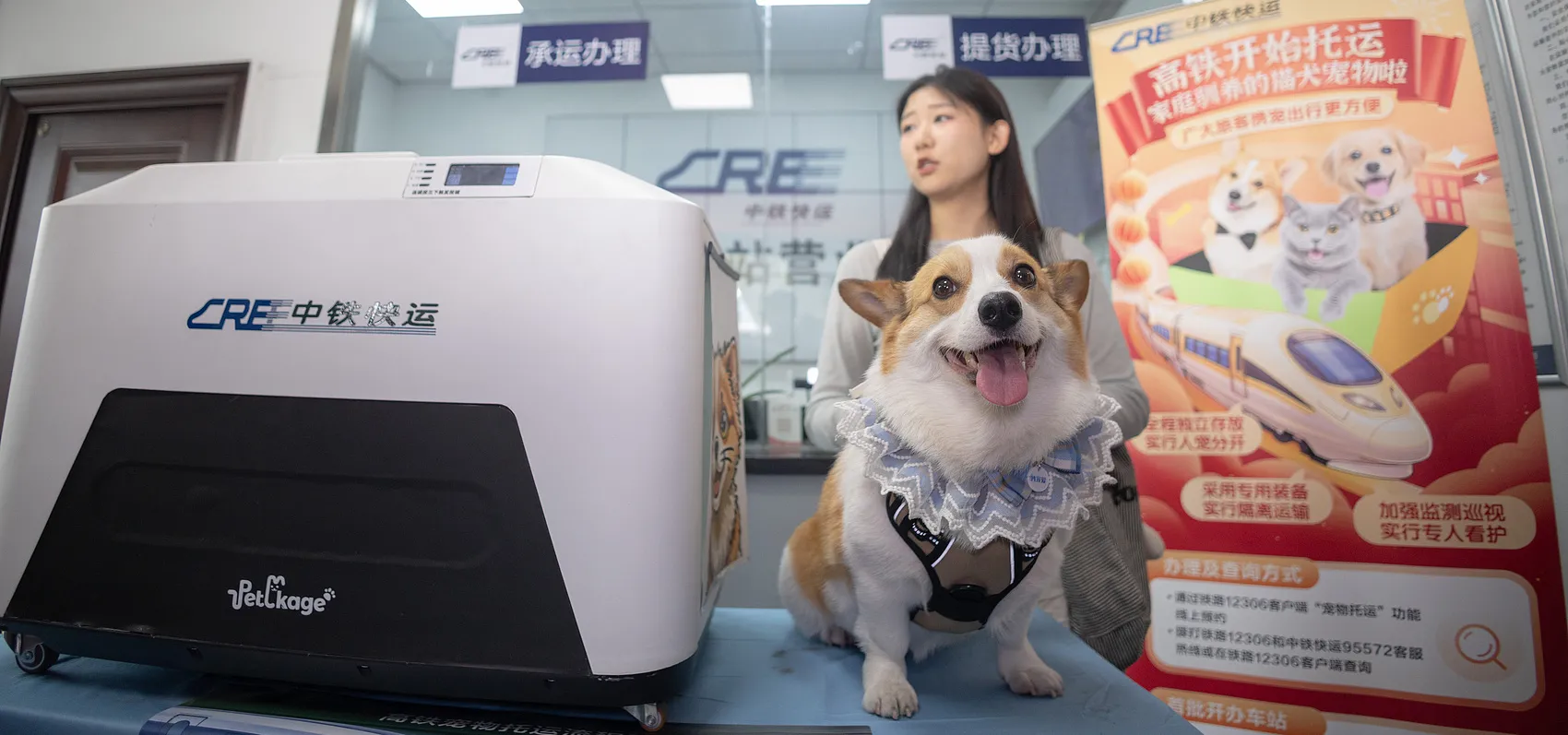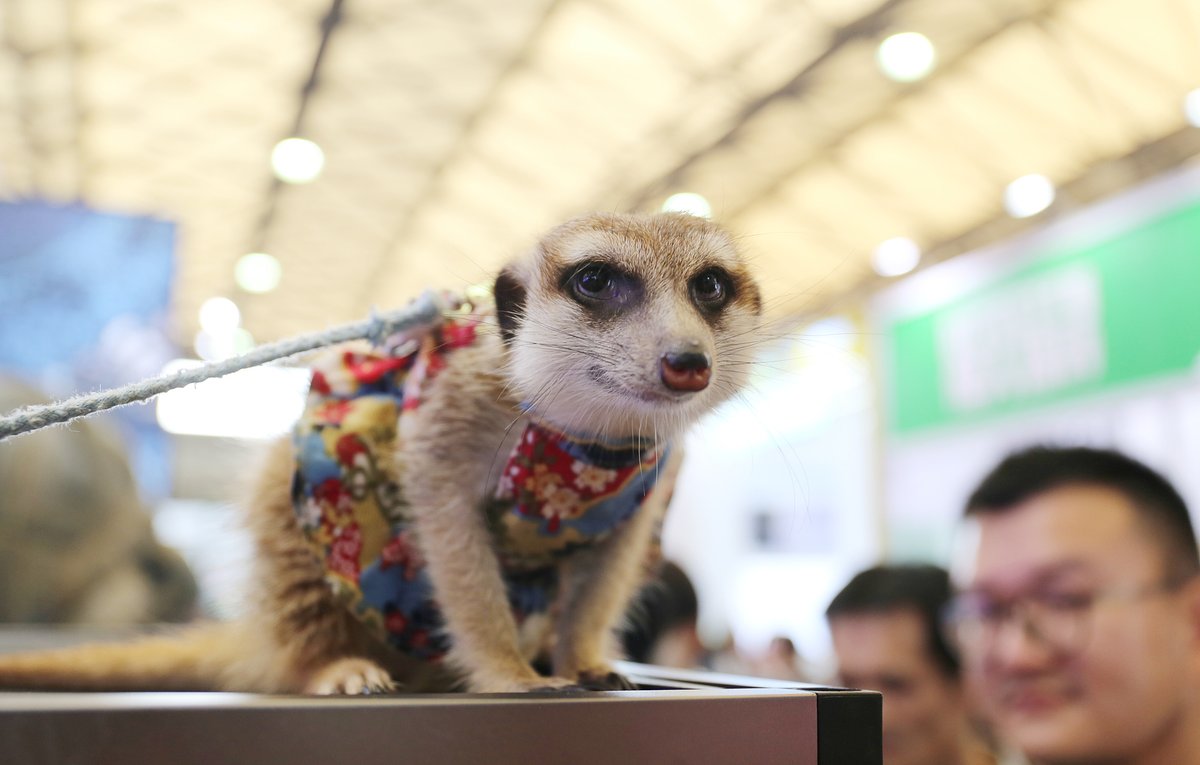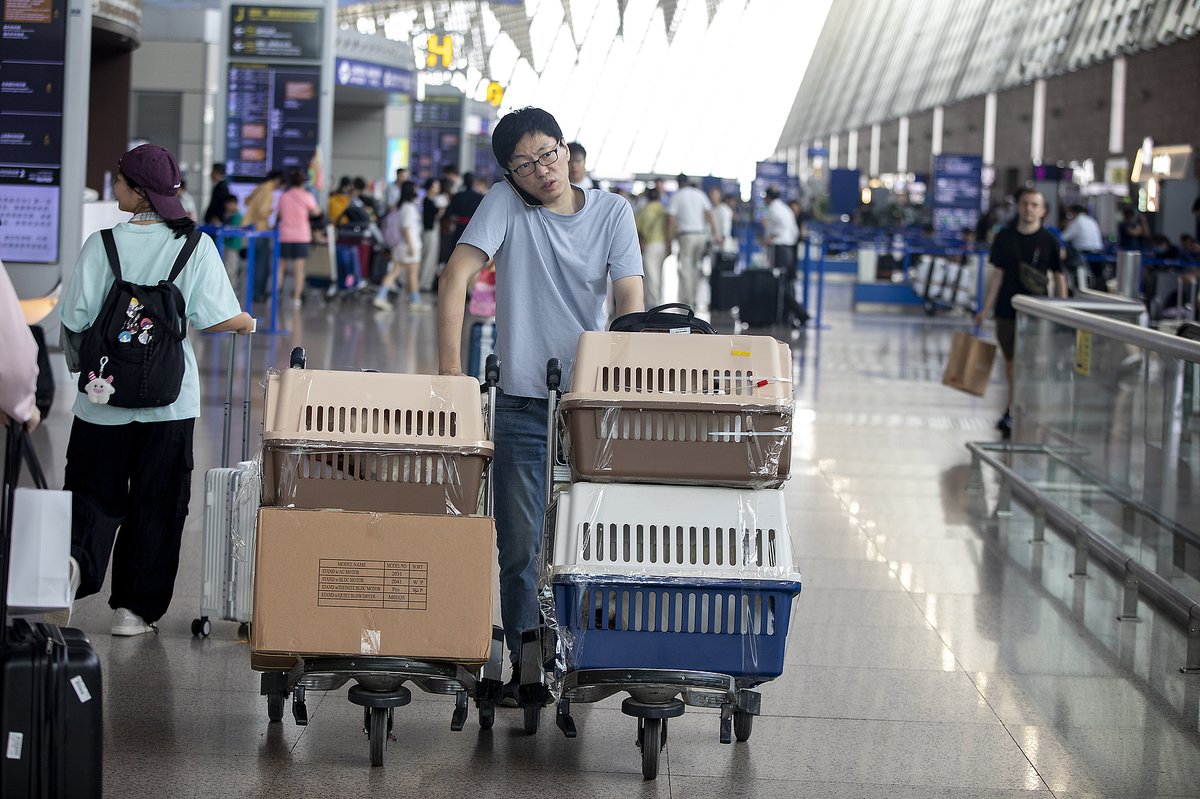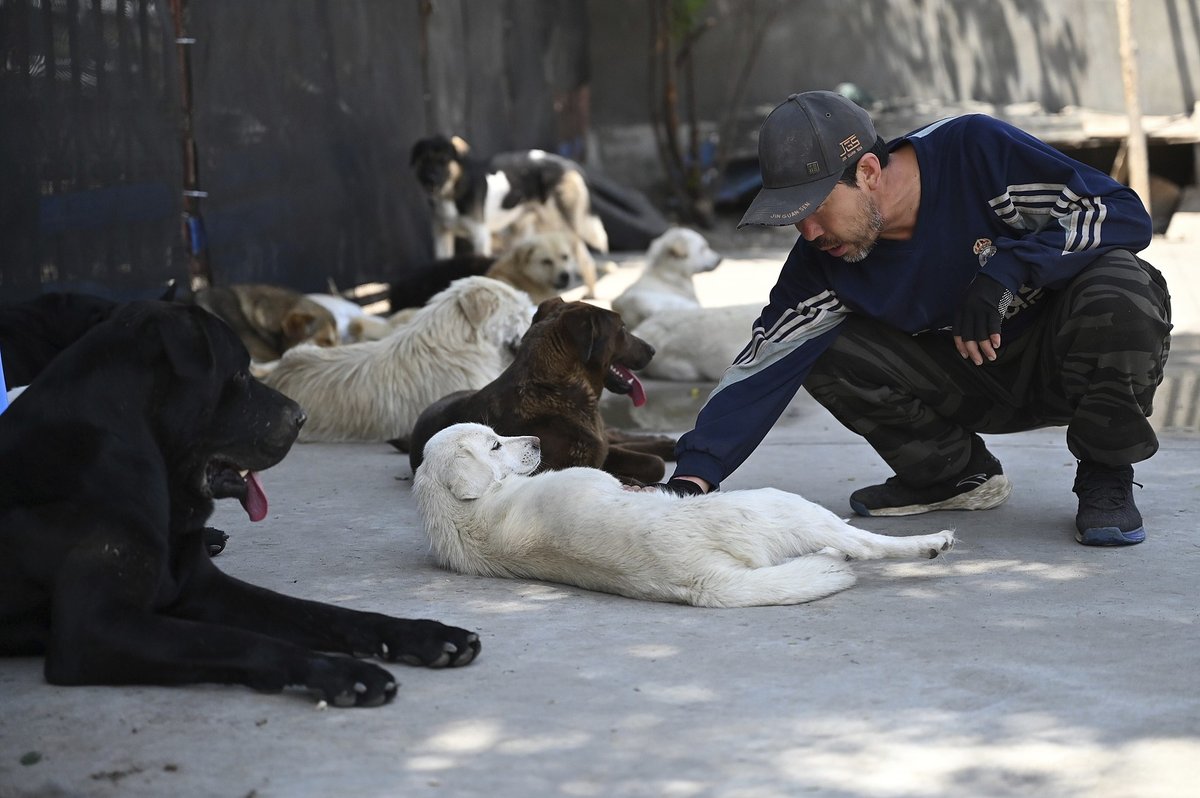As pet ownership continues to grow, China’s cities are taking steps to make daily life more accommodating for both animals and their humans
Ragdoll cats and miniature poodles doze in cafes. Tabby kittens splash on paddleboards in rivers and lakes. Dog parks buzz with playful pups, while people stroll their dogs through pet-friendly malls and shopping centers. Social media posts advertise events for pet owners and their animal companions. Over the past few years, many Chinese cities have witnessed drastic shifts in the pet ownership industry.
The country’s pet population in cities and towns now exceeds 120 million—a ratio of one pet per eight people—with the market for dog and cat products in these areas surpassing 300 billion yuan in 2024. Based on iiMedia Research’s projection, China’s pet economy is expected to grow steadily, with the market size reaching 1.15 trillion yuan by 2028. Accordingly, government regulators are attempting to mediate the relationship between the country’s humans, pets, and public spaces.
The transport sector has seen some of the most notable changes. Starting on April 8 of this year, the National Railway Administration permitted cats and dogs to travel between Beijing and Shanghai on high-speed trains departing from several designated stations, responding to long-standing calls from pet owners for more inclusive travel options. As of June 20, it includes 25 stations and 38 high-speed railway routes across the country, and is open to animals that weigh under 15 kilograms and have a shoulder height of less than 40 centimeters.
Read more about the pet industry in China:
- Is China’s Pet Boom Over?
- Canine Comrades: A Dog Attack Worries Pet Owners
- Cost of Cute: Why Animal Abuse is Rife in China’s Pet Industry
However, the policy has sparked debate, as pets still can’t travel alongside their owners. They must be dropped off by appointment at a designated location before departure. During the trip, pets stay in crates in a separate compartment, out of sight of their owners, and can only be picked up at the destination.
“There’s no guarantee what happens to your pet after they separate you at the station,” says Raven Zhang (pseudonym), a dog owner who lives in Beijing. She has no qualms about taking her dog on vacation—she has driven over 300 kilometers from Beijing to Qinhuangdao with him safely strapped into the backseat of her car—but says she will never take a train with him.
While China Railway Express says the crate comes with a litter box, water dispenser, and camera, and is spacious enough for pets to move around, with staff checking on them every two hours and adding water when needed, it hasn’t been enough to ease many pet owners’ concerns.
“I’ll still need to bring my cat’s specific food, drinks, litter, and toys with me, no matter where I go,” says 29-year-old Hui Lin, an education worker from Beijing, who would rather leave her cat at home than take her on a train. “[The current pet-friendly] transport doesn’t cover that.”
Airlines have taken steps forward, with a few now allowing small pets in the cabin on select routes. “Pets in air transport have historically been treated as cargo, [but] ‘fur babies’ are an integral part of many families,” says a representative at Shenzhen Bao’an Airport, which opened China’s first pet-friendly airport lounge for cats and dogs in May of last year, separating them from general cargo for the first time. The 210-square-meter lounge has separate areas for cats and dogs, with each pet given its own private waiting space to help ease travel anxiety.
The lounge is just one of many measures designed to streamline pet transport at the Shenzhen airport. Over the years, it has developed a one-stop travel service that allows pet owners to track their animals in real-time, interact with them through audio and video, access emergency remote medical care, and ensure seamless transfers to connecting flights or ground transport.
Guangzhou’s Baiyun Airport opened a 2,000-square-meter pet terminal in May, offering services similar to those in Shenzhen. The terminal features dedicated counters where passengers can check in with their pets and access exclusive waiting areas in a single, streamlined process.
But according to Dr. Carrie Qiao, a veterinarian at the International Center for Veterinary Services (ICVS) in Beijing, transport isn’t the only sector that has been trying to offer improved services for pet owners. “The government’s digital infrastructures, such as pet registration tools, have expanded greatly in the last decade,” she tells TWOC. In the past, new pet owners were required to register their pets at their local police department. Nowadays, they can complete the entire process online.
Qiao suggests that increased government attention, combined with the ongoing digital efforts of organizations such as ICVS to advocate for vaccinations, leashes, and other safety measures, has likely contributed to the growing life expectancy of pets. Nowadays, more and more owners are bringing in elderly animals to the clinic. “I joined the ICVS six years ago, right after I graduated from college,” she says. “Pet owners today display a much higher quality of care toward their pets than they did when I first started.” Prospective pet owners have also become increasingly aware of the widespread issue of urban stray cats and dogs, leading to a greater willingness to adopt pets from shelters. These shelters often host adoption days or partner with third spaces such as cafes to host adoption events.
“It’s a mutual effort,” says Dr. Liu Wei, director of Tsinghua University’s Tongheng Urban Planning and Design Institute. “The market and government both play their part in human-pet relationships, but it’ll take a long time to find the perfect balance.” She compares this shift in attitude to China’s recycling initiative, which she says took ten years to implement. Until then, while private and public sector actors troubleshoot their pet-friendly policies, she is optimistic that people will only continue to treat their pets better.
















